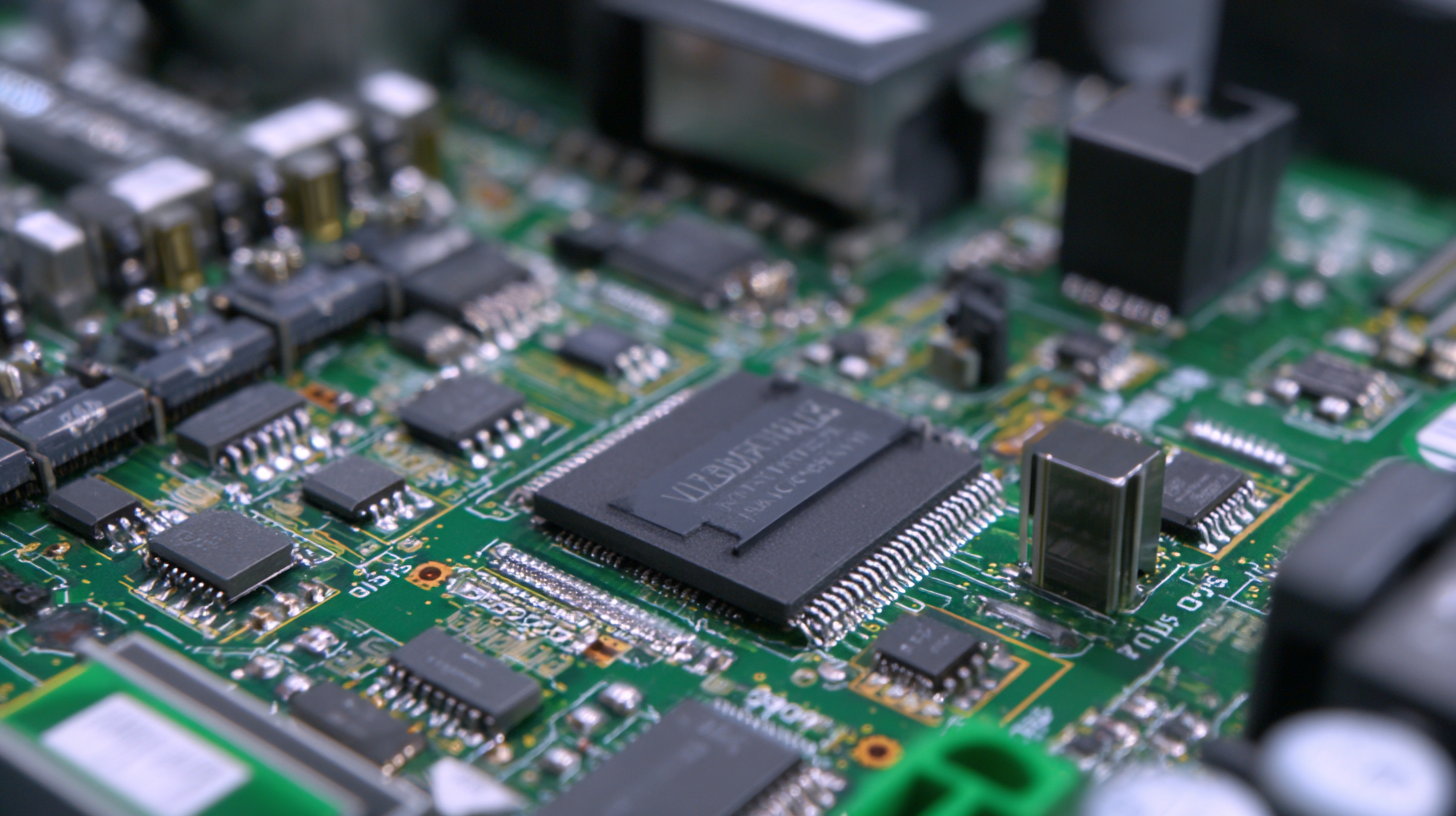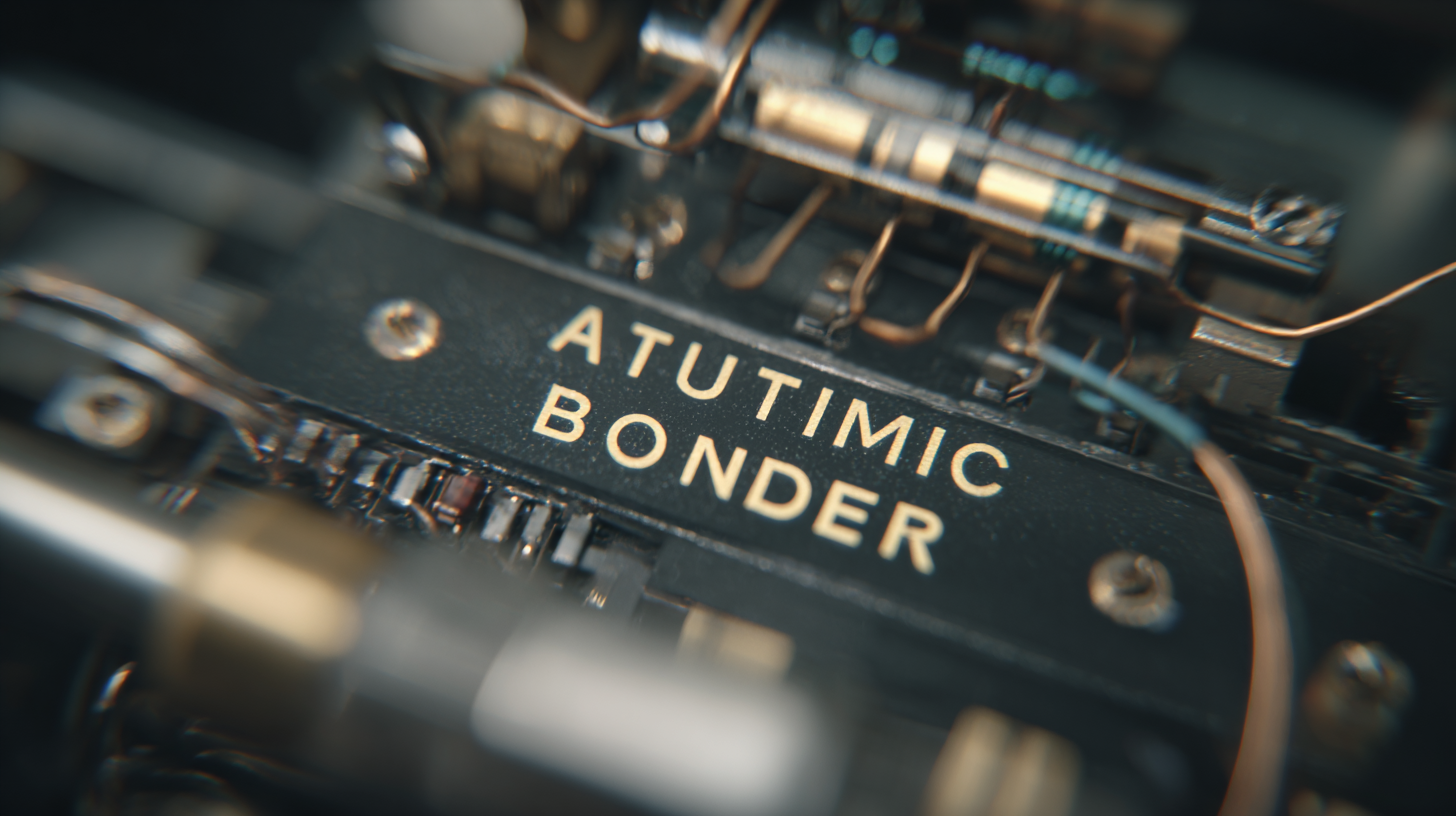In today's rapidly evolving electronics manufacturing landscape, the need for precision, efficiency, and reliability is more critical than ever. The Automatic Wire Bonder stands at the forefront of this revolution, offering unparalleled capabilities that streamline production processes and enhance product quality. As manufacturers strive to maintain a competitive edge, understanding the nuances of sourcing high-quality suppliers becomes paramount. An exceptional Automatic Wire Bonder not only boosts operational efficiency but also requires a supplier who can guarantee outstanding performance and durability. This blog will explore seven compelling reasons why investing in the best Automatic Wire Bonder can transform your manufacturing capabilities, and how to identify top-tier suppliers who can support your production needs effectively. Join us as we delve into the key considerations for achieving excellence in your electronics manufacturing journey.

The evolution of wire bonding technology has played a pivotal role in transforming electronics manufacturing. As manufacturers strive to enhance performance and reliability, innovations in automatic wire bonders have become essential. These advanced machines streamline production processes, improve bond quality, and reduce operational costs, addressing the increasing complexities of modern electronic devices.
Tips for manufacturers considering upgrades to their wire bonding equipment include evaluating the latest microstructure innovations in bond wires, such as aluminum-clad copper options that offer superior electrical and thermal conductivity. Additionally, staying informed about trends in semiconductor packaging, like the shift towards 3D hybrid bonding techniques, can help businesses remain competitive in this rapidly evolving market.
Moreover, exploring heterogeneous integration technologies can lead to improved efficiency in product assembly. By focusing on the interconnection advancements, companies can leverage new materials and processes that optimize the performance of their electronic components, thus ensuring they stay ahead of the curve in this dynamic industry landscape.
This bar chart illustrates the key advantages of using automatic wire bonders in electronics manufacturing, highlighting critical performance metrics such as speed, precision, cost-efficiency, flexibility, reliability, scalability, and ease of use.
 Automatic wire bonders have become an essential tool in modern electronics manufacturing, particularly those developed by top Chinese manufacturers. These sophisticated machines enhance production efficiency with their precise automation, significantly reducing the risks of human error. The incorporation of advanced features such as vision systems and programmable bond parameters allows for consistent quality across various applications, making them indispensable in the production of semiconductors and other electronic components.
Automatic wire bonders have become an essential tool in modern electronics manufacturing, particularly those developed by top Chinese manufacturers. These sophisticated machines enhance production efficiency with their precise automation, significantly reducing the risks of human error. The incorporation of advanced features such as vision systems and programmable bond parameters allows for consistent quality across various applications, making them indispensable in the production of semiconductors and other electronic components.
One of the standout characteristics of these wire bonders is their adaptability in handling different materials and bond types. Whether it's gold, aluminum, or ultra-fine wire, top Chinese manufacturers have designed their machines to easily switch between configurations, catering to diverse production needs. Additionally, these bonders often incorporate user-friendly interfaces that enable operators to quickly learn and manage complex bonding processes, streamlining operations and minimizing downtime. High-speed capabilities further contribute to the overall productivity of manufacturing lines, ensuring that companies can keep up with the increasing demand for electronic products.
Automatic wire bonders have become essential tools for electronics manufacturing, significantly enhancing efficiency and streamlining production processes. By automating the bonding of wires to semiconductor components, these machines reduce the likelihood of human error and increase the speed of production. This leads to faster turnaround times for projects, allowing manufacturers to meet the escalating demands of the market without compromising quality.
One tip for maximizing the efficiency of automatic wire bonders is to invest in regular maintenance and calibration. Keeping the machinery in peak condition ensures consistent performance and prolongs equipment lifespan. Additionally, operators should be trained thoroughly on the latest technologies and best practices to fully utilize the features of their bonding machines. This investment in training can lead to greater production efficiency and reduced downtime.
Another approach to enhancing efficiency is to integrate automatic wire bonders with smart manufacturing systems. This integration allows for real-time monitoring and data collection, which can be analyzed to optimize production workflows. By leveraging data analytics, manufacturers can identify bottlenecks and streamline operations, ultimately improving their overall productivity and responsiveness to market changes.
In the fast-paced world of electronics manufacturing, quality assurance plays a crucial role in ensuring the production of reliable and high-performance products. Automatic wire bonders have become instrumental in this process, significantly reducing defects and improving overall product quality. By standardizing the bonding process, these machines minimize the discrepancies that can occur with manual operations, where human error is always a risk. This consistency not only aids in achieving tighter tolerances but also enhances the durability and performance of electronic components.

The advanced technology integrated into modern automatic wire bonders allows for precise control over various parameters such as bonding temperature, force, and time. This precision is vital in ensuring that each bond is executed to perfection, resulting in a stronger and more reliable connection. Furthermore, these systems often incorporate real-time monitoring capabilities that can detect anomalies during the bonding process. By addressing issues as they arise, manufacturers can significantly decrease the defect rate, leading to higher yields and reduced costs associated with rework and scrap. As a result, automatic wire bonders not only enhance quality assurance but also contribute to the overall efficiency of electronics manufacturing.
The automation revolution in electronics manufacturing signifies a paradigm shift driven by advancements in technology. As industries embrace digital transformation, the integration of smart sensors, IoT, and robotics has enhanced efficiency and precision. Notably, automated PCB manufacturing has shown a substantial impact, allowing engineers to develop intricate designs that were once considered impossible. A report from McKinsey estimates that advanced manufacturing technologies could boost productivity by up to 30% in the next five years, suggesting a profound shift in operational capabilities.
Moreover, the rise of Industry 4.0 is transforming the landscape of electronics manufacturing, with AI playing a crucial role. Research indicates that the adoption of AI and machine learning could contribute over $16 trillion to the global economy by 2030, positively influencing sectors from automotive to consumer electronics. By harnessing automation, manufacturers can not only enhance production rates but also significantly improve quality control, reducing the defect rates by as much as 50%. This transformation not only optimizes resources but also paves the way for sustainable practices in manufacturing processes.
